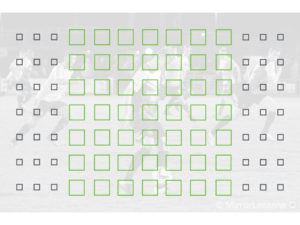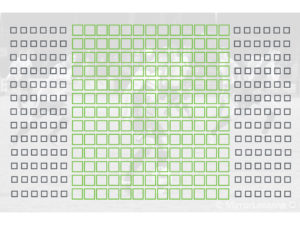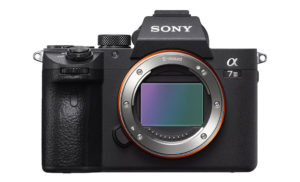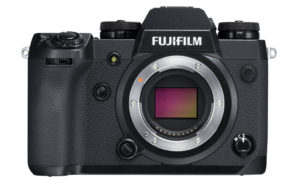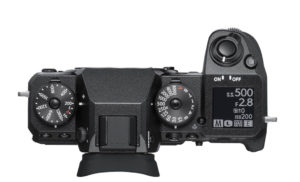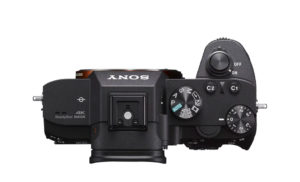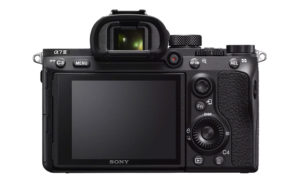The Sony A7 mark III and Fujifilm X-H1 are priced similarly at approximately $1900/$2000 and are, at the time of writing, two of the most interesting offerings from their respective brands.
The A7 III includes features from the flagship A9 and A7R III in a package that is less expensive in comparison to the other two E-mount cameras, making it a very attractive choice for photographers who want a full-frame camera with excellent autofocus and 4K video.
The X-H1 is the new flagship from Fujifilm and finds its place a step above the X-T2 for a few reasons, the most important being 5-axis sensor stabilisation which is a first for the company.
In addition to the most basic argument (sensor size), what else can be said about the A7 III and X-H1? Here is a list of the most interesting differences. Happy reading!
Update: our A7 III vs X-H1 complete comparison is online!
Ethics statement: The information supplied in this article is based on official specifications and our personal experience with Sony and Fujifilm cameras. For the full comparison with image samples, check our in-depth article here. We were not asked to write anything about these cameras, nor were we provided with any sort of compensation. Within the article, there are affiliate links. If you decided to buy something after clicking the link, we will receive a small commission. To know more about our ethics, you can visit our full disclosure page. Thank you!
1. Sensor size and technology
Let’s kick off with a topic that always manages to generate animated discussions: the sensor.
Both sensors have 24MP of resolution but the Sony uses the 35mm format, meaning it is 2.3x larger than the APS-C sensor found inside the X-H1.
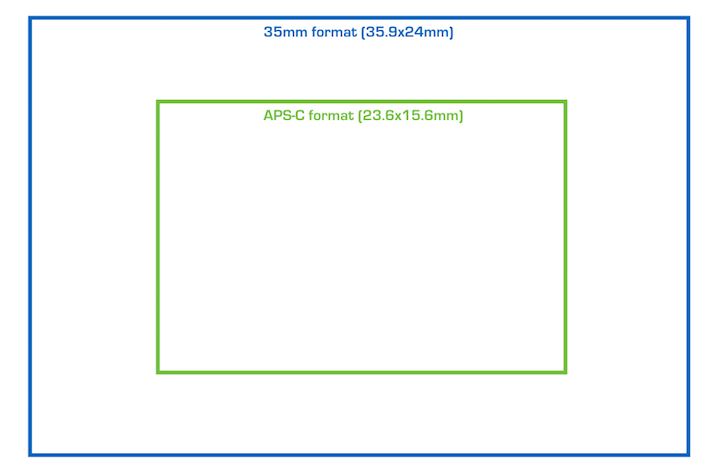
Then we have the technology of the two sensors. The Sony uses a BSI structure, which means that the photosites are closer to the surface and collect more light. It features a front-end LSI chip that increases the readout speed in comparison to its predecessor.
The X-H1 sensor uses a different structure (similar to the a6300/a6500) that employs a thinner copper wiring rather than aluminium. It allows the sensor to gather light more efficiently, read faster and produce less noise in comparison to the previous X-Trans II generation.
Another important characteristic is the organisation of the pixels on the sensor: the A7 III uses a standard Bayer array whereas the X-H1 uses the X-Trans pattern, which guarantees the presence of at least one red, blue and green pixel on each horizontal and vertical line.
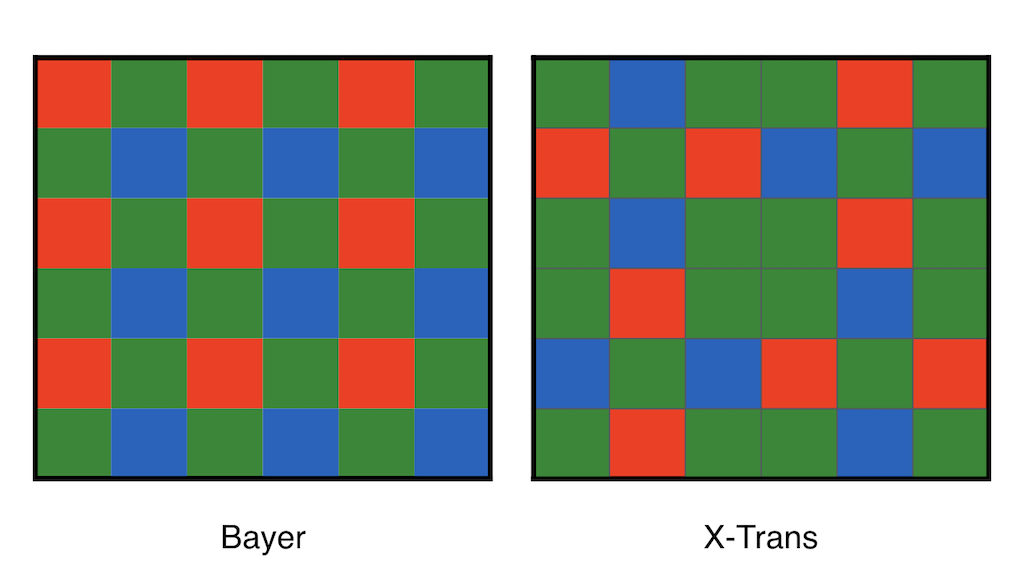
X-Trans RAW files have generated lots of debate since the original X-Pro1: some photographers love the results and some don’t. As usual, we prefer the take the middle ground.
Some software programs do a better job at demosaicing and rendering the finest details, and often they’re not the most mainstream ones (for example, Lightroom does worse than Iridient Developer). For a bayer based file, this is often not a problem. In our extensive experience with Fujifilm cameras, we’ve never had an issue with the RAF files and we believe there are other more important things to consider but of course, you may have a different opinion.
Finally, a word about bit depth: the RAW format is 14-bit on both models with uncompressed options. The X-H1 also has a lossless compressed option whereas the A7 III has a compressed setting.
2. ISO Sensitivity
The A7 III starts with a native sensitivity of 100 to 51200 ISO. It can be extended to ISO 50 and 204800 for stills / 102400 for video.
The X-H1 has a smaller range of 200 to 12800 ISO. The extended options go as low as ISO 100 and as high as 51200 for stills / 25600 for video.
3. Autofocus
The cameras incorporate two very effective autofocus systems.
The Sony uses 693 phase detection points like the flagship A9, along with 425 contrast detection points. It has a minimum sensitivity of -3Ev.

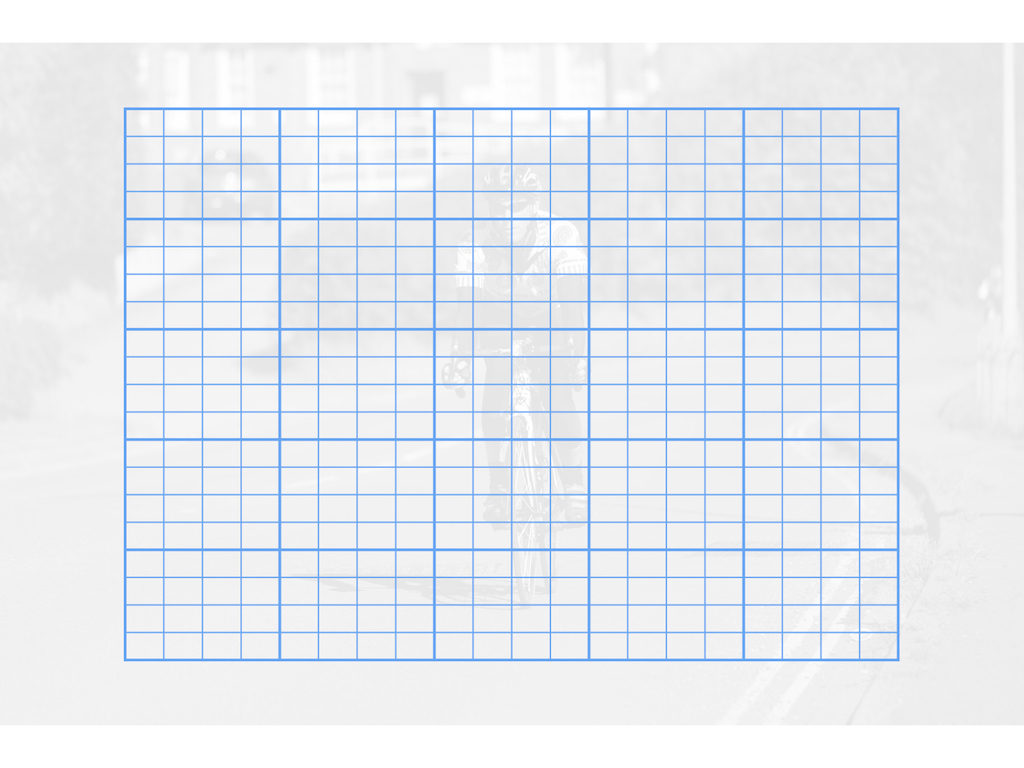
The X-H1 features 91 points that can be selected from a 13×25 grid (325 points) with certain shooting modes. The central points (49 or 169) are phase detection areas.
The X-H1 allows you to manually customise the continuous autofocus performance depending on the subject photographed thanks to the AF-C Custom Settings. They let you manually configure three parameters (tracking sensitivity, speed tracking sensitivity and zone area switching) or choose between five presets designed for different types of moving subjects (accelerating/decelerating speed, ignore obstacles, etc.). The A7 III only has one setting to control the responsiveness of the autofocus. Both cameras feature face and eye detection.
One last point about third-party lenses: the phase detection system of the A7 III provides excellent compatibility with adapters and DSLR lenses from Sony (A-mount), Sigma and Canon. There are also a few adapters that work with Nikon lenses, though I have’t tested them yet. Not every lens is comfortable to use – especially the larger and heavier ones – but it’s certainly a nice plus for someone thinking of migrating one step at the time from one system to the other.
There are a few adapters available for Fujifilm that enable autofocus but I haven’t tested them and I am not sure how reliable they are in comparison to the one for the E-Mount.
4. Continuous shooting and shutter speeds
The Sony can shoot at a maximum burst speed of 10fps with either the mechanical or electronic shutter while maintaining full autofocus and exposure tracking.
The Fuji has a slower speed of 8fps with the mechanical shutter, unless you attach the optional VPB-XH1 battery grip that boosts the speed to 11fps. With the electronic shutter, you can reach 14fps (with or without the vertical grip).
By looking at the official specifications, we can see that the A7 III has better buffer capabilities (177 JPGs, 89 compressed RAW) than the X-H1 (83 frames in JPG, 33 in lossless RAW).
Finally there is the maximum shutter speed to consider: it is 1/8000s for both, but only the X-H1 takes advantage of the electronic shutter to increase it even further to 1/32000s.
5. Image stabilisation
The A7 III features 5-axis in-body stabilisation that delivers up to 5Ev compensation (CIPA standards) for stills and video. The system can work with lenses that feature optical stabilisation, meaning that the camera uses 3 axes on the sensor (Roll, X and Y) and two axes on the OSS lens (Pitch and Yaw).
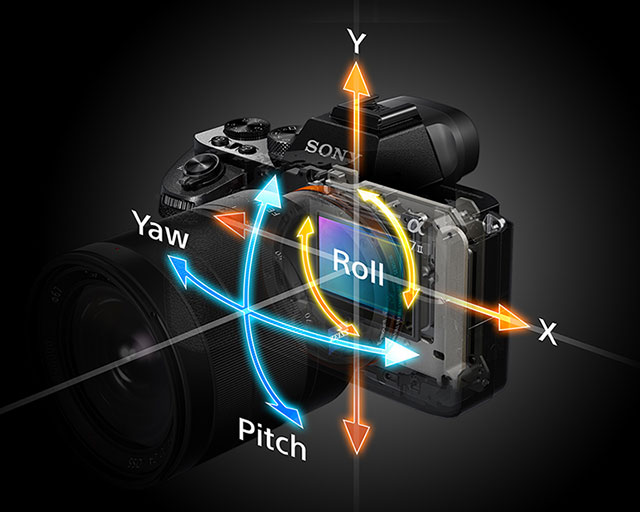
The X-H1 is the first camera from Fujifilm to feature this technology. It uses 5 axes as well and can work in tandem with the optical stabilisation of Fujinon lenses. One interesting technical note is that the camera uses two processors and according to Fujifilm, it is the only camera to do so. By contrast, all other brands use just one processor. This means that the camera can analyse the data and provide the necessary adjustments faster and more accurately.
The system provides 5.5Ev of compensation, although Fujifilm states that this can only be achieved with the XF 35mm f1.4. With many it is 5.0 and with some others, it is even less than that (3.5Ev with the XF 18-55mm for example). Furthermore, the camera can distribute the axes depending on the specific lens mounted. For instance, with the recent 80mm Macro whose optical stabilisation system is more advanced, the X-H1 uses 1 axis on the sensor (roll) and 4 axes on the lens (X, Y, Pitch and Yaw). With many other lenses, it’s three axes on the sensor and two on the lens just like the Sony.
As a final note, you can insert the focal length manually in the menu and use 3 axes on the sensor for each camera with a lens that lacks electronic contacts.
6. Video
Both cameras can record in 4K Ultra HD (3840 x 2160) at a maximum of 30fps. The A7 III has a bitrate of 100Mbps using the XAVC S codec (60Mbps can also be selected) whereas the X-H1 goes up to 200Mbps. Furthermore, the Fujifilm can record in Cinema 4K (4096 x 2160) at 24 or 23.98fps.
The Sony can record at 24 or 25fps with full pixel readout without any sensor crop, so the entire width of the sensor is used. At 30p however, a small crop of 1.2x happens. The X-H1 has a constant crop of approximately 1.17x.
Below: an official movie sample from the Sony YouTube channel
In 1080p, the both cameras can record at up to 120fps for slow motion footage.
One important difference to highlight is that the X-H1 has a shorter recording time per video clip: in 4K it can record for a maximum of 15 minutes, which becomes 20 minutes in Full HD. You can extended these durations to 30 minutes with the vertical battery grip. Moreover, the 120fps mode only works up to 6 minutes. The A7 III on the other hand can record up to 30 minutes per clip in all formats without the need for extra accessories.
When it comes to image settings, the A7 III has lots to offer: it includes the Picture Profiles inherited from the Cine-Alta camcorder series that are naturally designed for video use. You can tweak colour saturation and phase, black levels and master pedestal and choose from many gamma and colour curves, including S-Log2, S-Log3 and HLG (Hybrid Log Gamma).
The X-H1 has one log profile (F-Log); otherwise you have to choose one of the Film Simulation Modes. You can tweak settings such as shadows, highlights and colour. Fujifilm has also included a new profile called Eterna, which is their first developed especially for video use. It is designed to give a cinematographic look with soft colours and tones. It can be used with the DR400% setting which gives an equivalent 12 stops of dynamic range and more room for colour grading.
Note that both cameras record internally with a 8-bit 4:2:0 compression, and can output a 8-bit 4:2:2 signal via the HDMI port.
Below: our 4K video shot with the X-H1 and the Eterna profile
The A7 III includes a few extra settings such as Zebra and Timecode/Users bits, Gamma Display assist (for S-Log2/3) and proxy recording.
You will find a microphone input on both models, but only the A7 III has a built-in headphone output. For the X-H1, you need the battery grip once again.
7. Viewfinder
The A7 III uses the same OLED panel as its predecessor, which has 2,360k dots and a maximum refresh rate of 60fps. The magnification is 0.78x and the eyepoint is 23mm long.
The X-H1 comes with more resolution (3.60M dots), a sligthly smaller magnification (0.75x) but a faster refresh rate of 100fps. The eyepoint is 23mm as well.
8. LCD monitors
Both cameras feature a 3-inch LCD monitor but there is a difference in the tilting mechanism they employ.
On the A7 III, you can tilt it on two axes, either up and down. On the X-H1, there is a third axis that flips to the right side by approximately 65°, which is useful when working in portrait orientation.

Both monitors are touch sensitive but while you can only move the focus point on the A7 camera, on the X-H1 you can also focus, take a shot, assign up to 4 functions to four different swiping movements (left, right, up and down) and adjust settings in movie mode to operate the camera more silently.
The Fuji camera has an extra screen located on top: it’s a monochrome type LCD that – just like high-end DSLRs – displays the settings used, as well as other information such as the remaining battery life. It can be customised to display other things in a similar fashion to the medium format GFX-50s.
9. Design and controls
The cameras have a robust magnesium alloy construction and numerous sealing points against dust and moisture, but only the X-H1 is officially protected against cold temperatures (-10°C).
The Fuji camera is heavier and slightly larger than the Sony:
- A7 III: 650g, 126.9mm x 95.6mm x 73.7mm (minimum depth 62.7mm)
- X-H1: 673g, 139.8mm x 97.3mm x 85.5mm (minimum depth 39.5mm)
One thing we can notice right away is the larger grip of the Fuji camera, since it has been designed to work with the largest XF lenses. Professional photographers in particular will welcome this design enhancement.
The grip of the A7 III is the same as that of the A9 and A7R III (which we already tested), and while it is suitable with small to medium lenses, I didn’t find it comfortable enough with heavier lenses such as the FE 100-400mm GM.
Then we have some of the usual differences between Sony and Fujifilm cameras. The X-H1 features more dials including those for shutter speed, ISO, drive and metering. Both have exposure compensation, two front/rear control dials (which are used to adjust the exposure on the A7 III) and an AF Joystick.
Finally, a note about the dual memory card slots present on both cameras: the X-H1 offers compatibility with UHS-II for both slots, whereas the A7 III only has one compatible slot.
10. Battery life
The A7 III inherits the same NP-FZ100 battery used for the A7r III and A9. That is excellent news because this particular battery performs really well. In fact, the A7 III pushes the CIPA rating even further than its siblings, managing 710 shots with the LCD or 610 with the EVF. This is the highest of any mirrorless camera thus far.
The X-H1 official specifications mention 340 shots on a charge with the NP-W126S battery in Normal mode. Obviously the individual battery grips on both cameras can push these numbers up further.
Sadly Sony doesn’t include a battery charger with the A7 III, so you need to charge the camera via USB or buy an optional charger. The X-H1 also comes with a USB charging option.
Conclusion
Update: our A7 III vs X-H1 complete comparison is online!
The current retail price of the two cameras is similar in most regions, although there might be a more significant difference in some places such as Europe ($2000 / £1999 / €2300 for the A7 III, $1900 / £1700 / €1900 for the X-H1).
Many will certainly consider the A7 III the better deal because of its larger sensor, excellent autofocus system, 4K video and 5-axis stabilisation, amongst other things.
Despite being a very well-rounded product, I admit that the X-H1 doesn’t appeal to me as much as some other Fujifilm cameras, perhaps because it inaugurates fewer new features. That being said, it’s nice to to see Fujifilm finally integrating IBIS in one of its camera. Plus the camera offers something extra in terms of ergonomics and ease of use thanks to the prominent grip and various exposure dials.
Specifications and technicalities aside, another topic worth thinking about is the lenses. Fujifilm has already produced a very balanced range of high quality optics, but there is a lack of third-party options, with the exception of some Zeiss glass and a few manual focus lenses from Samyang/Rokinon.
Sony now offers a very good selection of native FE lenses, although many tend to be on the large and expensive side. That said, more third-party brands are now investing in the E-Mount, Sigma being the latest to add its name to the list. This is an excellent way to strengthen a system, and Sony could gather a considerable following over the next few years as a result.
Check price of the Sony A7 III on
Check the price of the Fujifilm X-H1 on

